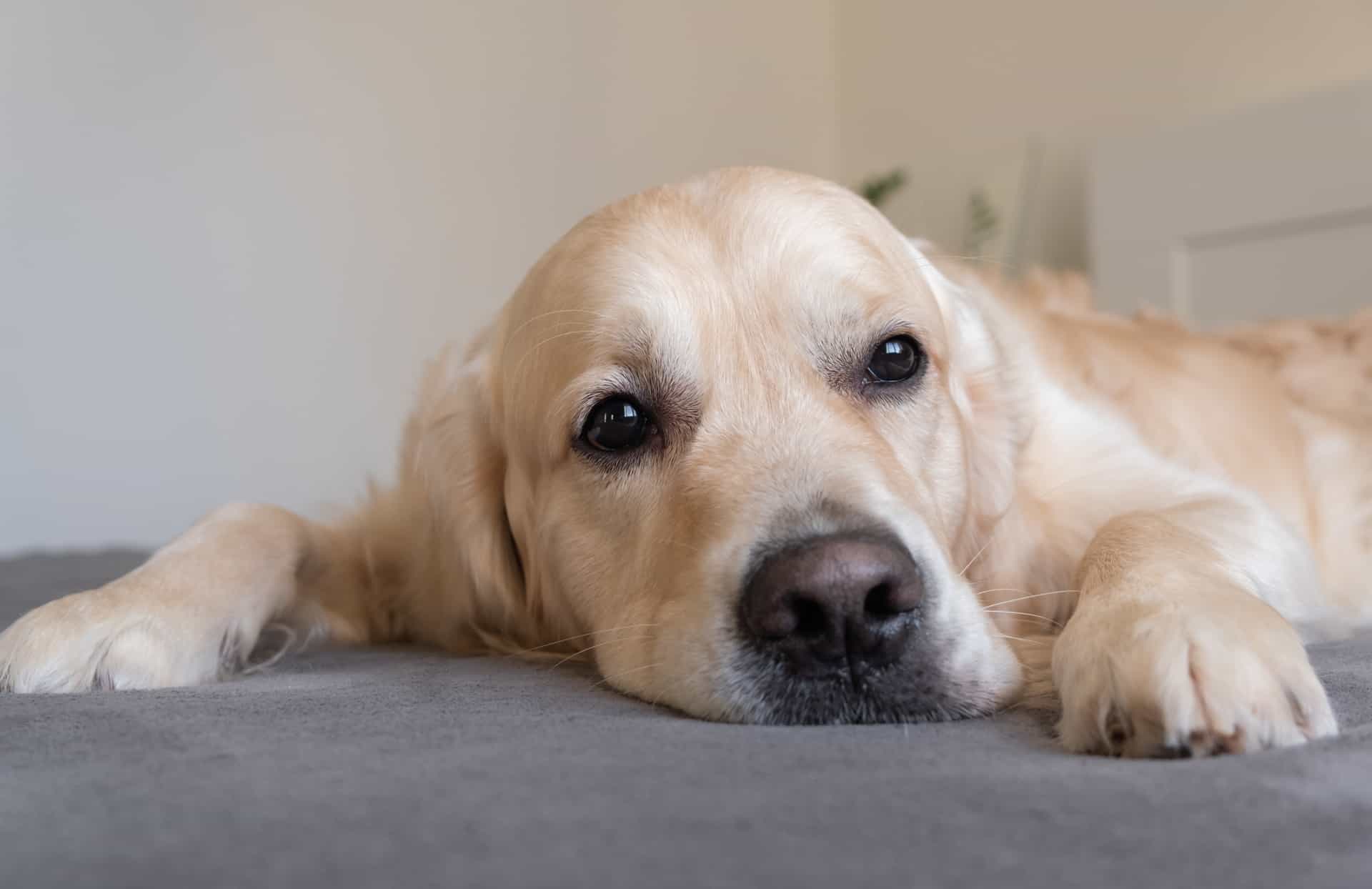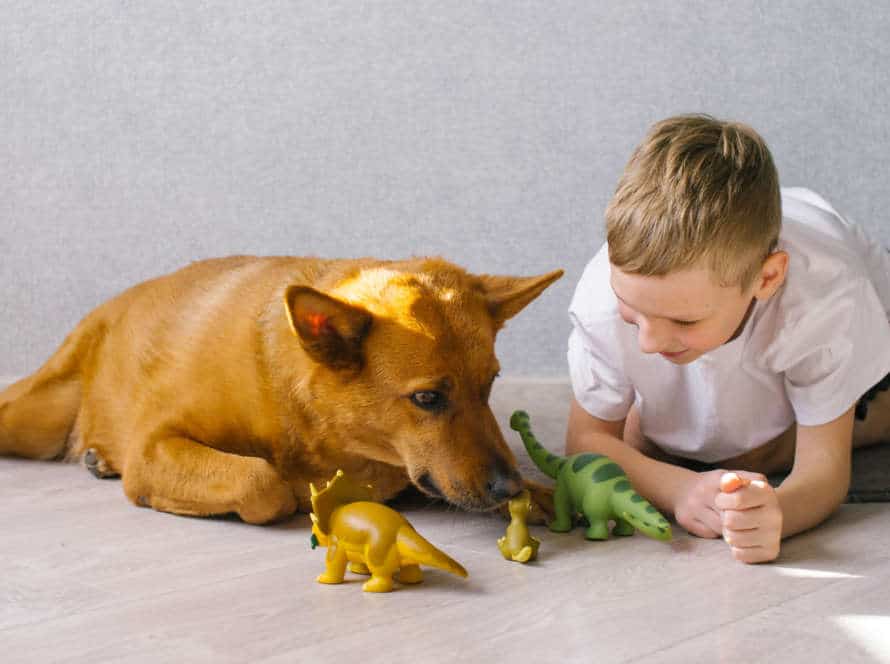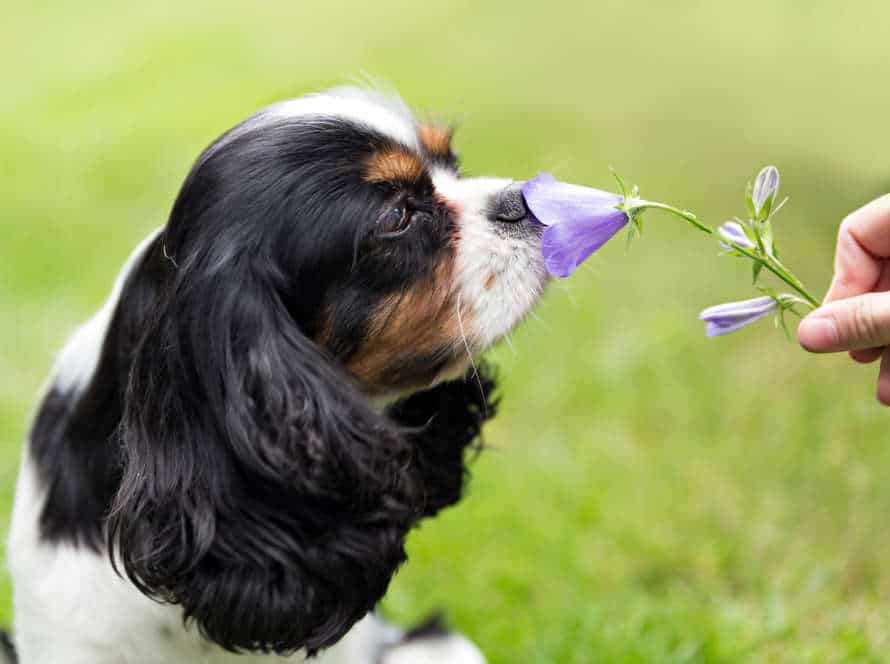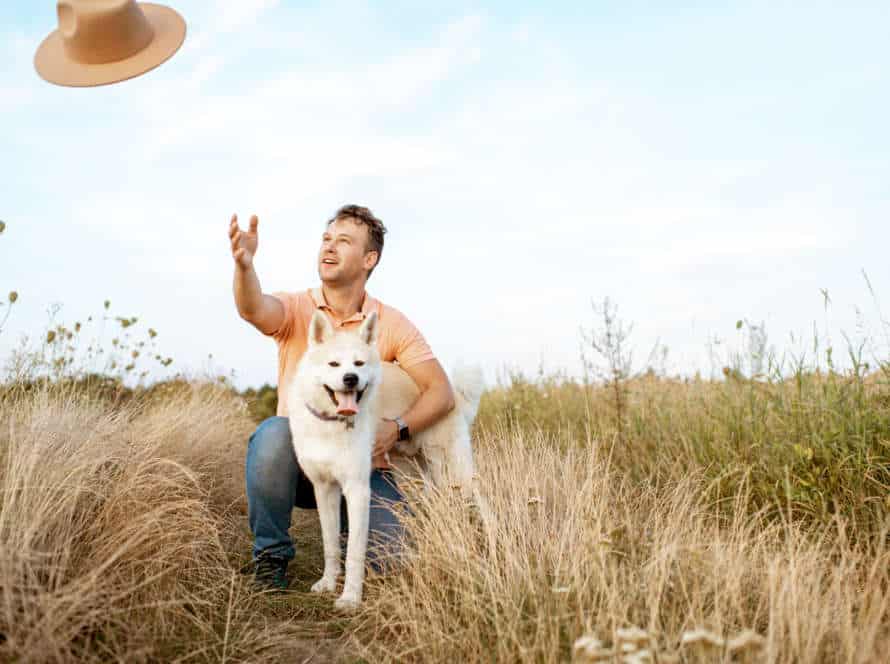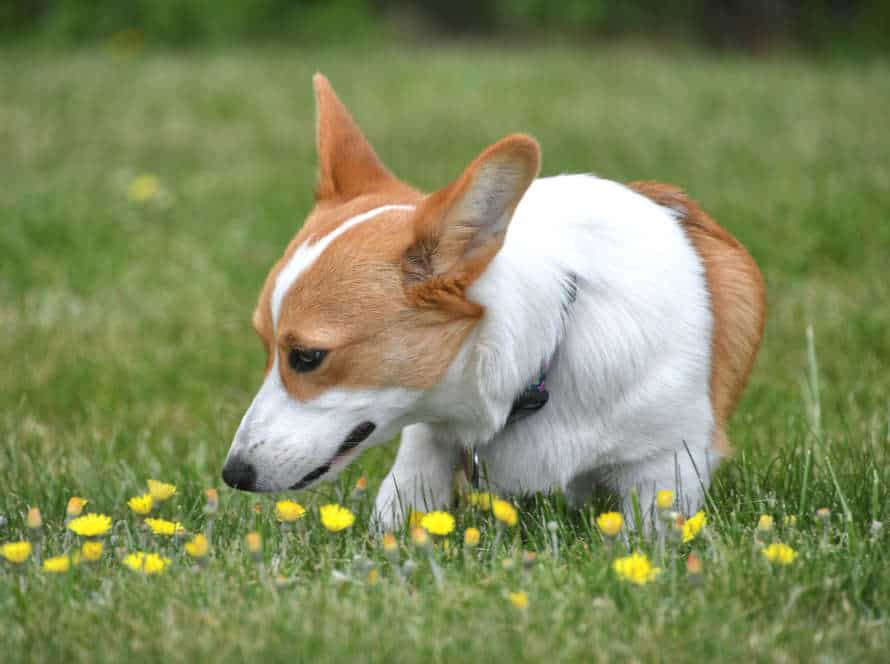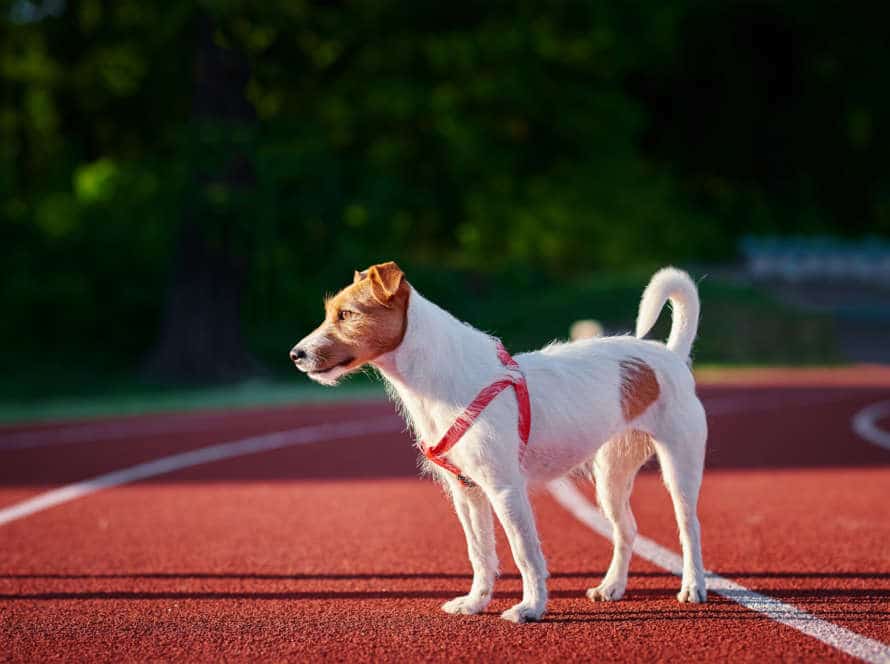Trick Training as Enrichment: Combating Canine Boredom
Trick training is lots of fun for dogs and can be used to make their lives better and fight boredom.
Dogs are social animals who need mental stimulation, interaction, and exercise to be healthy and happy. Here are some of the great benefits to trick training your pup:
- Mental Stimulation: Trick training exercises your dog’s brain by giving them problem-solving tasks and mental challenges. This type of training helps their minds stay sharp and alert.
- Emotional Bonding: Trick training gives you the chance to build trust and give positive reinforcement and pleasure. This helps your bond with your pup stay strong.
- Physical Exercise: Trick training also gives your dog physical exercise, which is very important for staying healthy. The activity helps their muscles and their heart.
In summary, trick training is a great, easy way to make your pup’s life better and keep them from being bored. It helps them mentally and physically, plus it helps you and your pup stay close.
Benefits of Trick Training
Trick training can perk up your pup! It’s an entertaining and engaging way to create trust between you and your dog. Plus, everyday activities can become enjoyable games. Obedience skills can also be sharpened with trick training. Let’s explore the benefits: mental and physical enrichment, bonding, and fun!
Mental Stimulation
Trick training is a superb way to stimulate your pup’s brain, fighting off boredom and behavior problems caused by a lack of mental exercise. Here are some advantages of trick training for your pooch:
- Enhances mental stimulation: Trick training makes your pup think and problem solve, which tires them out just as much as physical exercise.
- Boosts the bond between pet and owner: Trick training is a great way to make a strong connection between your pup and you, helping build trust.
- Strengthens self-belief: Trick training allows your dog to learn and master new skills, building their confidence.
- Improves obedience and focus: Learning tricks requires your pup to focus and pay attention, which can also help in daily life.
All in all, trick training offers a great chance for your pup to interact with their environment, build trust with you, and get rid of boredom and bad behavior.
Physical Exercise
Trick training isn’t only entertaining for pups! It’s also a great form of exercise and stimulation. As part of a fitness plan, it can help burn calories, build strength, and increase agility. Plus, it’s fun and encourages the bond between you and your pup. The benefits?
- Physical fitness and coordination improvement.
- Mental stimulation and boredom prevention.
- Communication boost and stronger relationship with owner.
- Outlet for creativity and problem-solving.
- Positive reinforcement training for positive behaviors.
Adding trick training to your pup’s regular routine is a great way to boost their health and happiness.
Strengthening Bond with Owner
Trick Training is a great way to bring dogs and their owners closer! It has many advantages beyond just learning new tricks. The benefits are as follows:
- Building Trust: Trick Training lets dogs build trust with their owners through rewards.
- Mental Stimulation: Just like humans, dogs can get bored easily. Trick Training provides mental activity that keeps dogs busy, interested and stops misbehaviour caused by boredom.
- Exercise: Doing tricks is a good workout for dogs, and it uses their mental muscles rather than physical.
- Strengthening the Bond: Trick Training gives owners and dogs more quality time together and allows them to bond over new skills.
Trick Training is really beneficial, as it helps with the owner-dog relationship and keeps dogs active mentally and physically. To get the most out of it, train in an undistracted area, use rewards like treats and compliments, be consistent and keep track of your dog’s progress.
Getting Started with Trick Training
Ready to teach your pup some tricks? Trick training can give your dog mental and physical stimulation, which is especially important for pups that are home alone a lot. It’s an easy and fun way to get your pup interacting with you and understanding the basics of obedience and communication.
Here are some tips to get started!
Choosing the Right Tricks for Your Dog
Picking the right tricks for your pup is significant. Not every trick is perfect for each pup. Consider the breed, age, temper, and your own training goals when deciding which trick to train.
Here are some tips:
- Begin with the basics, like “sit”, “stay” and “come”.
- Take your dog’s physical abilities into account, particularly if they are elderly or have any disabilities.
- Pick tricks that match your pup’s character and interests. For example, fetching a ball or spinning around.
- Train in short, regular sessions. Utilize positive reinforcement to motivate your pup.
Trick training is an entertaining way to keep your pup interested and active.
Preparing the Training Space
It is key to prepare the learning space when teaching tricks to a pup. Here are some tips for great results.
- Choose a big room with little disturbances to do the training. A peaceful, roomy spot in your home is ideal.
- Put a blanket or mat to stand on, to make a nice, upbeat learning environment for your dog.
- Gather all the teaching items in one place – treats, clickers, and training props.
- Make sure there is good lighting, so your pup can see your hand signals and body language clearly.
- Start with simple tricks and move on to more difficult ones. Set achievable goals for your pup and reward them every time they finish a trick.
- End every practice session on a happy note and give your pup plenty of exercise and mental stimulation throughout the day.
Positive Reinforcement Techniques
Positive reinforcement techniques are a kind and effective way to train your pup. Reward desirable behavior and teach tricks to combat boredom. Here are a few tips for trick training:
- Choose a quiet, distraction-free spot.
- Use a high-pitched, excited voice to grab your dog’s attention.
- Break down each trick into small steps.
- Use a clicker or a verbal marker when your dog performs the desired behavior.
- Reward with a treat, praise, or play.
- Be patient and take breaks to avoid overwhelming your pup.
Trick training can be fun and enriching for both of you!
Advanced Trick Training
Advanced trick training provides numerous benefits for dogs! It keeps them active and mentally stimulated. Plus, it builds trust and confidence between pup and owner. How can it be used? Let’s take a look! This type of training helps fight canine boredom and gives dogs something to look forward to each day.
Building on Basic Tricks
Once your pup has aced basic tricks, it’s time to move on to more advanced ones! Not only do these show off to your friends, but they offer enrichment and mental stimulation for your furry friend. Examples of advanced tricks include: ringing a bell to go outside, rolling over and playing dead, jumping through a hoop, opening/closing doors, and fetching items by name.
Trick training as enrichment is an awesome way to combat doggy boredom, stimulate their minds, and bring you two closer. It encourages dogs to think and solve problems, and it’s an enjoyable way to help them burn off some energy. Reward and praise your pup at each step to help boost their confidence and encourage good behavior.
Incorporating Props and Costumes
Adding props and costumes to your advanced trick training can add extra enjoyment and combat boredom. Here are some tips on how to do so:
- Ensure the prop or costume is safe for your pup.
- Introduce it beforehand, so they can get used to it.
- Connect the prop/costume with a command.
- Use positive reinforcement to get them to interact/wear it.
Trick training is great for your pup’s physical and mental wellbeing. Incorporate props and costumes for extra fun.
Chaining Tricks Together
Chaining tricks together is an advanced trick-training technique. It can keep your pup from getting bored by providing mental stimulation and strengthening the bond between you and your pooch.
Start by teaching each trick separately. Then, link them up with verbal cues and hand signals. Go slow and practice often for your dog to build muscle memory and understand the transitions between each trick.
Some examples of trick chains are: “roll over, play dead, sit up,” and “shake hands, high five, turn around.” Chaining tricks will challenge your pup’s brain and concentration. Plus, it’ll help you grow your relationship with your furry friend.
Pro Tip: Always use positive reinforcement techniques during training. Don’t force your dog to perform a trick. Keep the sessions short and fun so your pup stays focused and interested.
Troubleshooting Common Training Issues
Trying to teach tricks to your pup? You might face some common problems. Such as: not paying attention, not motivated, and having difficulty concentrating. Here’s some tips to help you out. Troubleshoot these issues and make the trick training more successful.
Lack of Interest or Motivation
No interest or motivation in trick training? That could be a sign of canine boredom. To prevent it, include trick training in your pup’s enrichment program. Enrichment activities stimulate their mind and give mental exercise. Trick training is a great form of enrichment to keep them focused and avoid boredom. Here are tips for using it:
- Begin with simple tricks that your dog can learn easily. Then, increase the difficulty over time.
- Use positive reinforcement such as treats, toys and praise to motivate them.
- Keep sessions short and fun, not long and tedious.
- Change the routine regularly to keep your pup engaged.
This way, your pup will be engaged, avoiding boredom and receiving better training and attention.
Difficulty with a Particular Trick
Trouble training your pup? There may be some common issues. Here’s how to troubleshoot:
- Break the trick into simpler steps. Practice each one.
- Reward with treats, praise, and playtime.
- Practice the trick in different places and with distractions.
- Change your approach or get help from a professional.
Plus, trick training is fun and enriches your dog’s life. It builds confidence and strengthens your bond.
Fear or Anxiety During Training
Dogs can fear or be anxious during training. So, it’s important to be patient and understand why they’re uncomfortable. Here are some tips:
- Slow down the process – break it down into smaller steps.
- Use positive reinforcement – like treats and praise.
- Change the training location – it might be the cause of stress.
- Trick training can be enjoyable and stimulating.
- Always take a compassionate approach. And, consult a professional if the problem continues.
Pro tip: Training should be happy. If your dog is displaying distress, take a step back and assess.
Using Trick Training as Part of a Larger Enrichment Plan
Tricks can help fight doggie boredom! Teach your pup something new. Motivate them to do positive activities. Trick training is important part of an enrichment plan. This plan should include daily exercise, mental stimulation, good socialization, and environmental enrichment.
Let’s look closer at how tricks combat boredom in canines.
Combining with Other Activities
Trick training can be a blast for your pup, as well as a great training technique. Combining it with other things can give your furry friend mental and physical exercise and keep them entertained. Here are some ideas to mix up trick training:
- Puzzle toys: Place treats inside your pup’s favorite puzzle toy. Encourage them to do a trick for the reward.
- Agility training: This will add a challenge and help with their coordination and focus.
- Outdoor walks: Take your pup for a walk and practice tricks along the way. Use obstacles like benches and logs to show off.
- Obedience training: Mix this with trick training to reinforce basic commands and teach new ones.
Combining trick training with other stuff will keep your pup happy, entertained, and stimulated. Pro tip: Keep training sessions short and fun and always reward your pup’s efforts.
Planning Training Time into Daily Routine
Incorporating training time into your daily routine is a great way to make sure your pup gets the mental stimulation they need. Trick training is a great method, which not only helps their brain but also strengthens the bond between you and your pet.
Here are some tips to make it part of the daily routine:
- Begin with basic tricks such as ‘sit,’ ‘stay,’ and ‘come.’
- Then, move onto more advanced ones such as ‘roll-over,’ ‘spin,’ and ‘high-five.’
- Use high-value treats and positive reinforcement to motivate your pup during the training.
- Keep the sessions brief, around 5 to 10 minutes, so they don’t get bored or tired.
- Include trick training as part of an extended enrichment plan that includes physical exercise, interactive toys, and other mind-stimulating activities.
Doing this regularly will help your pup learn new skills, build confidence, and provide them with an excellent mental workout.
Pro Tip: Remember to make the sessions enjoyable and rewarding for your furry friend.
Establishing Goals and Tracking Progress
Setting goals is key when doing trick training to give your pup mental and physical stimulation and a sense of achievement. Here are some tips:
- Figure out what tricks you want to teach your pooch.
- Break each one down into baby steps.
- Set a goal for each trick, like doing it in a certain place or situation.
- Write down your progress in a log – date, goals, and behaviors achieved.
- Regularly review and adjust the goals as needed to keep your pup challenged.
Bonus Tip: Always make trick training fun and rewarding for your pup, with a focus on bonding time.
Frequently Asked Questions
Q: What is trick training for dogs?
A: Trick training is the process of teaching your dog a series of fun and entertaining behaviors that provide mental stimulation and physical activity.
Q: How does trick training benefit my dog?
A: Trick training keeps your dog mentally challenged and engaged, helping to prevent boredom and destructive behavior. It can also improve your dog’s focus and obedience skills.
Q: Do I need any special equipment to start trick training with my dog?
A: No, all you need is some treats and a positive attitude! Some tricks may require basic equipment like a hoop or a target stick, but these items can easily be made at home or purchased inexpensively.
Q: What are some easy tricks to teach my dog?
A: Some easy tricks to start with include “sit,” “stay,” “shake,” and “spin.” From there, you can progress to more advanced tricks like “roll over,” “play dead,” and “fetch.”
Q: Can trick training be a form of exercise for my dog?
A: Yes! Trick training is a great way to provide physical activity for your dog, especially if you incorporate tricks that involve jumping, running, or climbing.
Q: Can any dog learn tricks?
A: Yes, any dog can benefit from trick training as long as they are physically able to perform the tricks. Some breeds may be more difficult to train than others, but with patience and persistence, any dog can learn a variety of tricks.

